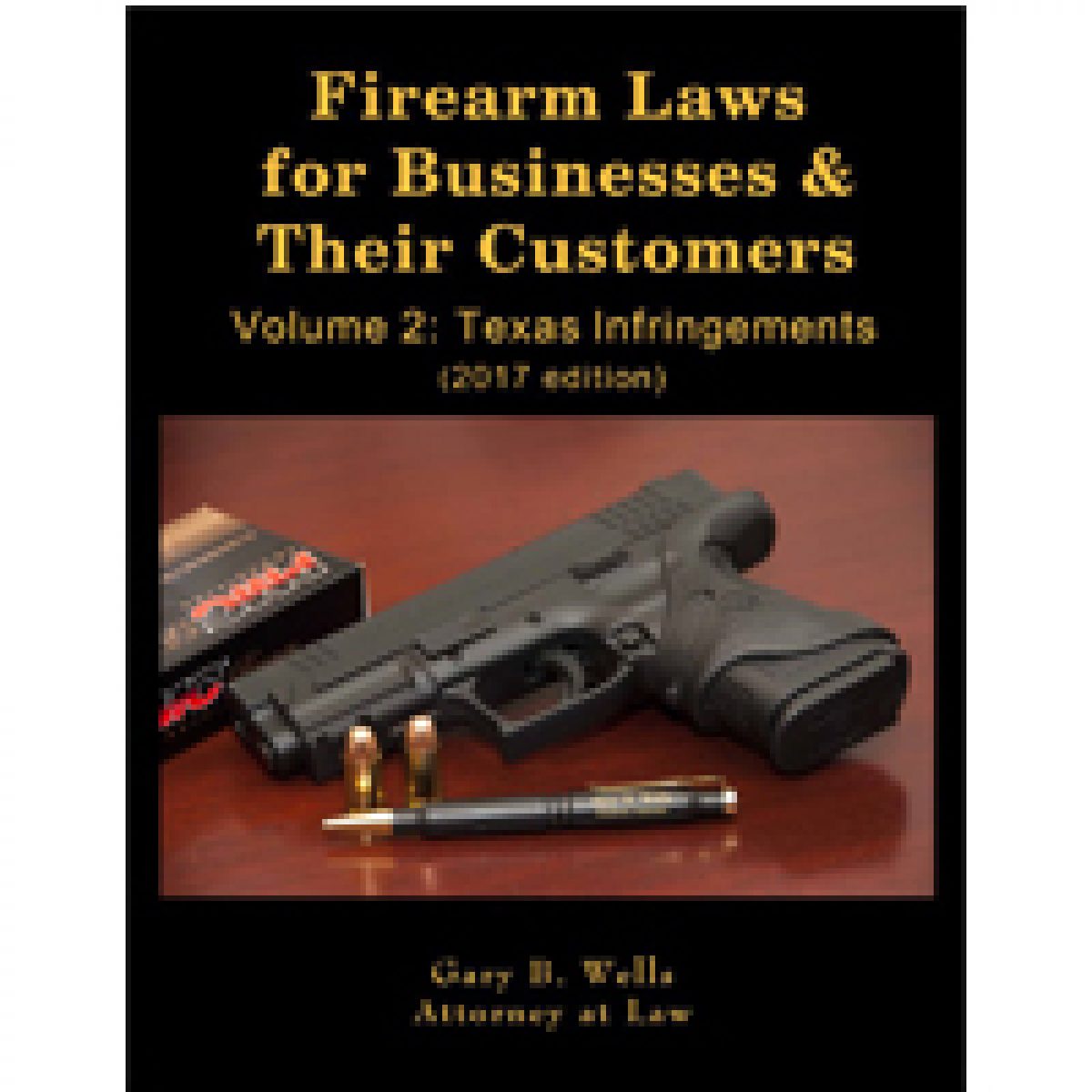New Legal Resource for Firearm Businesses and Firearm Owners
Texas has a one of the most positive “pro-gun” reputations among the states. With this reputation, one would expect that Texas’s gun laws would be minimal and, as many believe, “pretty much anything goes.” This is not the case. Like most states, Texas has a long history of repressive firearm laws, particularly with regard to carrying firearms off a person’s own property. The first Texas concealed carry bill was passed in 1995. While significant inroads have been made in Texas’ gun laws since that time, the struggle to overcome prohibitive laws passed almost 150 years ago has proved to be a slow process. While these rights are sometimes reluctantly restored, the legislative process involves the giving with one hand while taking away with the other. As prohibitions are removed, those new laws add multiple conditions and qualifications which are a long way from withstanding the standard that a “law cannot be passed to infringe upon or impair [the right to bear arms], because it is above the law, and independent of the law-making power.” (Cockrum v. State, 24 Tex. 394 (1859), p. 401.) The most obvious example is the restoration of the right to carry a handgun and the limitations or infringements that came with that restoration, including the need for a license to carry, restrictions on who can carry, statutory restrictions on the places where handguns can be carried, and provisions allowing entities to create their own “gun-free” zones.
Until the time when the phrase “shall not be infringed” is interpreted as it is stated in the United States Constitution, firearm owners, firearm businesses, and other businesses will continue to struggle with determining and complying with the continued onslaught of federal and state restrictions. To help in this endeavor, attorney Gary B. Wells, who has been practicing law for more than 26 years, has published the second volume of his series on firearm laws to serve as a valuable resource for determining what the firearm laws are in Texas. It pulls together the statutes, administrative rules, and agency guidelines to help understand the complexity of the firearm laws and explains what is required to comply with them. Because of its organization and extensive table of contents, it serves as a quick reference and procedural guide. It also points out some of the problems with the firearm laws in Texas and those needing correction or elimination.
For firearm owners not in the firearms business, Volume 2 addresses the basics of federal and Texas firearm laws regarding what is being regulated; explanations as to those who are not allowed to possess firearms; locations where firearms are prohibited; firearm laws related to hunting and target shooting; laws regarding personal firearm transfers; laws involving firearm crimes, seizures, and self-defense; and the extensive requirements, restrictions, and obligations related to licenses to carry and the School Marshal Program. It also addresses the general restrictions on carrying in places of worship and available defenses (pp. 147-149) and the recent changes to the laws regarding Church Member Volunteer Security Patrols (pp. 477-478).
Both Volumes 1 and 2 are indispensable for Texas firearm businesses. As any firearms businesses understands, the quantity of poorly-written, obsolete, and erroneously-applied laws affecting firearms can be confusing and overwhelmingly complicated. In addition to the GCA, application of the NFA and ITAR laws are being applied to businesses never intended to be covered and products that were never anticipated when these laws were passed. Determining what these laws are and how they are being applied by the government can become overwhelming, particularly because there are so many different sources for these laws and the ATF publications are generally outdated. Volume 1 explains in detail the Gun Control Act, the National Firearm Act, and the International Traffic in Arms Regulations. Volume 2 addresses the Texas laws for establishing a firearms business and the related requirements and protections. It also explains the Texas laws for shooting ranges, firearm instructors, law enforcement, private security, schools, and non-firearm businesses obligations regarding allowing or disallowing firearms on their property.
More information about these books can be found at Gary’s website: www.firearmslaw.attorney.
Gary is licensed as an attorney in Texas and California and provide legal services to businesses by helping them get started and continue their operations, with a particular focus on firearms businesses. He also works with individuals and business owners by helping them with their estate planning needs (will, trusts, gun trusts, durable powers of attorney, etc.), transfer and possession issues including restoration of rights, federal and state appeals, and family law mediation.
Published in Gun Laws





Great article. We need more resources like you to enhance our 2nd Amendment rights!